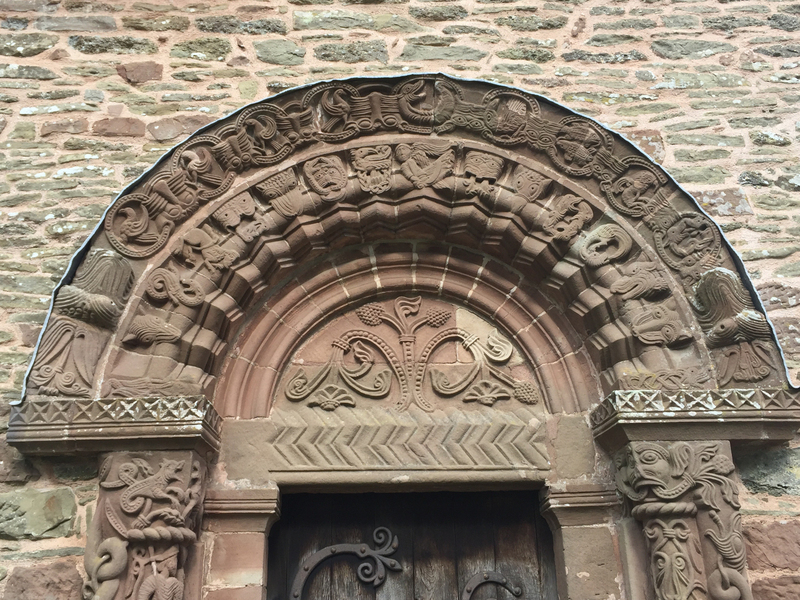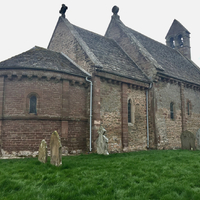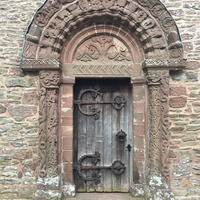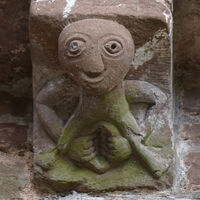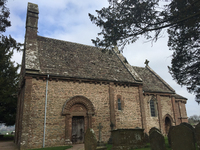Kilpeck parish church
Type:
Churches,
Sculptures,
Portals
Date:
1130s
Location or Findspot (Modern-Day Country):
England
Description:
The small parish church at Kilpeck was probably commissioned in the 1130s by the minor Norman nobleman Hugh of Kilpeck, who owned the land and the adjacent castle. The red sandstone church has a simple plan—a rectangular nave, square chancel, and semicircular apse—but a rich repertoire of figural sculpture. Relief sculpture appears on the interior but is concentrated especially on the outside, on the south portal and the corbels below the roofline. There is a "tree of life" motif in the portal tympanum and intertwined serpents on the jambs. The left jamb also depicts two warrior figures dressed in trousers and peaked caps, perhaps fighters in the Holy Land, although the patron of the church is not known to have gone on crusade. Many types of animal images are carved on the corbels, real and imaginary creatures as well as stylized human figures and heads.
At least one corbel is explicitly sexual: a sheela-na-gig, a female exposing her vulva, appears on the south side of the apse.
Relevant Textbook Chapter(s):
7
Repository and Online Resources:
• See all the sculpture from Kilpeck on the website of the Corpus of Romanesque Sculpture in Britain.
Image Credits:
Linda Safran; Wikimedia Commons
